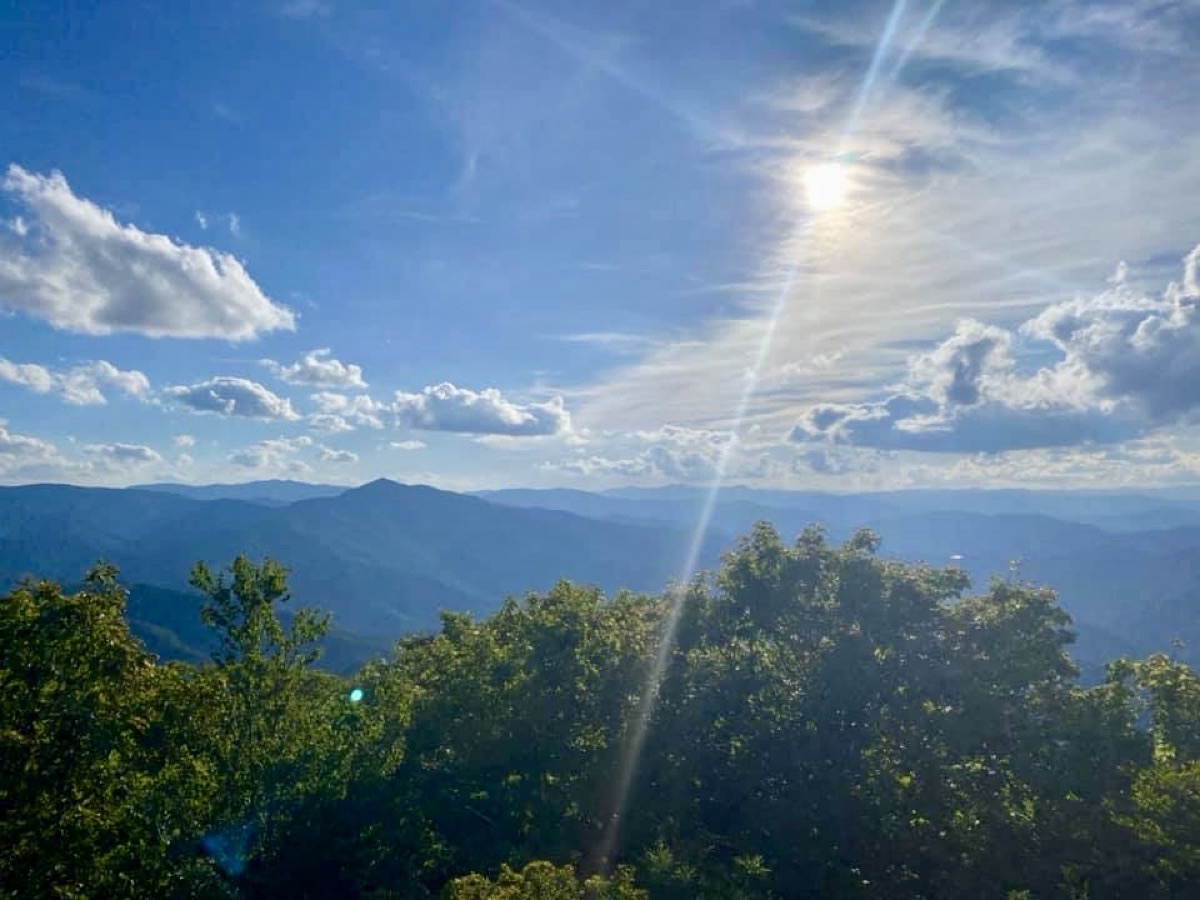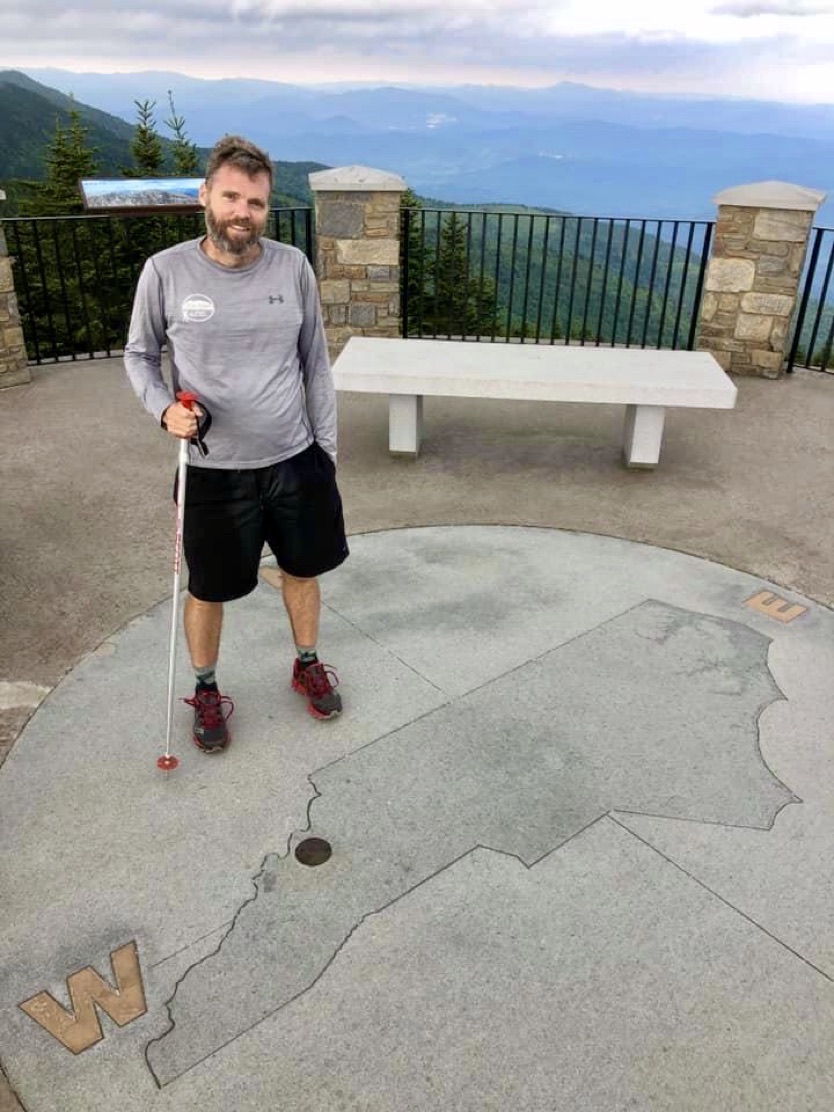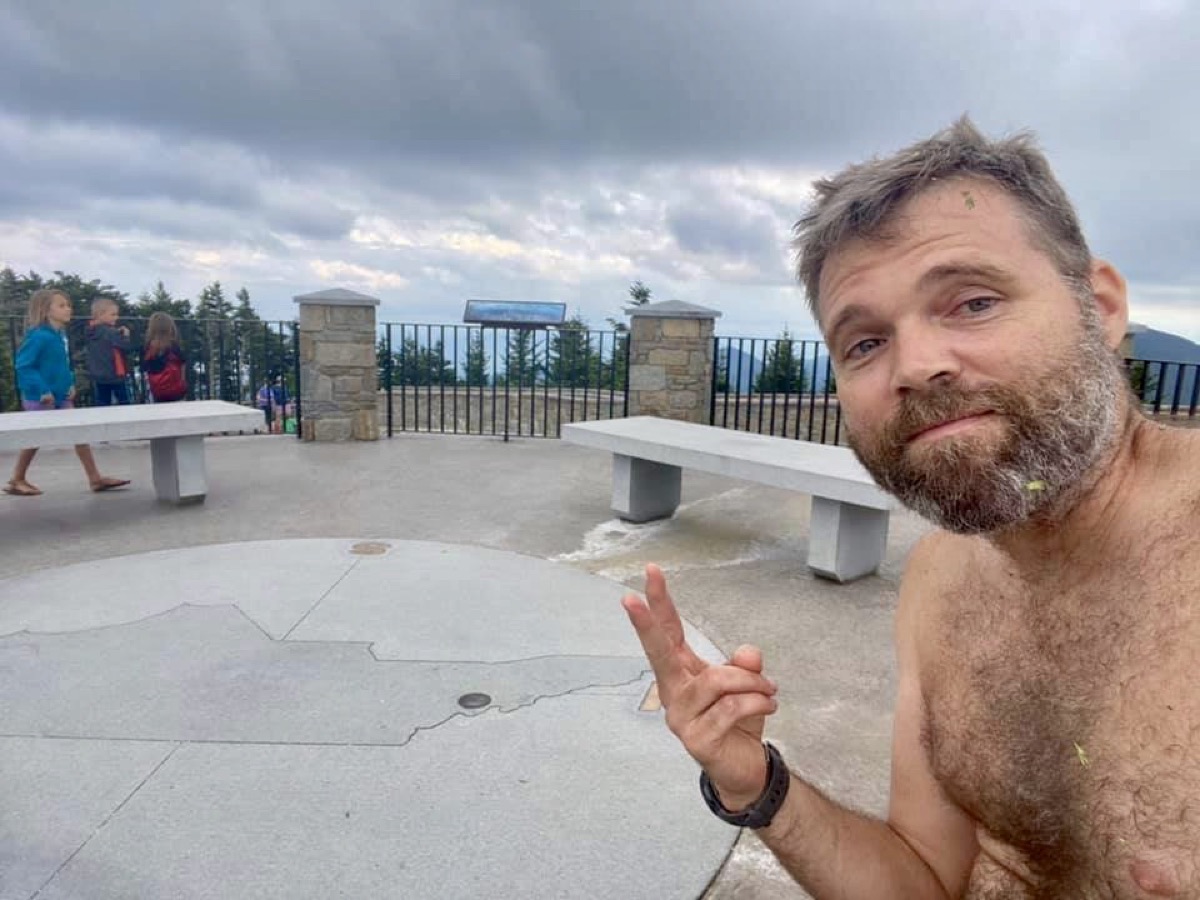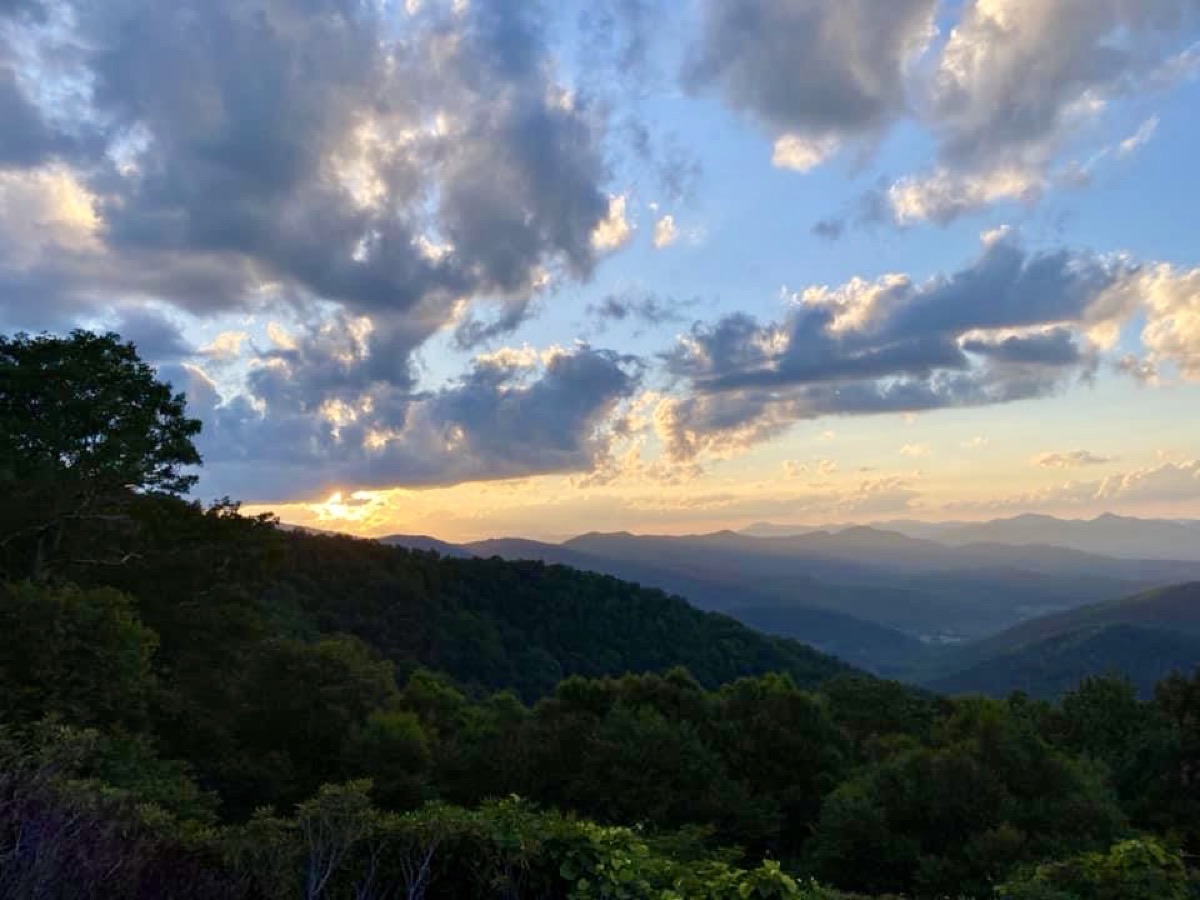[Editor’s Note: This essay was written by Brew Davis who lives in Asheville, North Carolina where he writes songs, takes care of his kids, and helps run Blue Ridge Hiking Company with his wife Jennifer Pharr Davis.]
Let me be clear about something right out of the gate. I am not Anton Krupicka or Jim Walmsley. I am not Emelie Forsberg or Ellie Greenwood. If you’ve heard of me at all, it’s probably because I helped my wife Jennifer Pharr Davis set the Appalachian Trail (AT) Fastest Known Time in 2011. And that was nine years, three chickens, two kids, one torn anterior cruciate ligament (ACL), and a lifetime ago. (Speaking of Appalachian Trail records, if you haven’t been paying attention to Liz Anjos aka Mercury, check her out because she’s tearing it up).
This essay isn’t a “how-to” from an elite runner. It’s the opposite of that. It’s a how-to from a 42-year-old dad who likes to stay in decent shape but also drink beer and bourbon and oh by the way have an adventure every now and then. I’m about as average an ultrarunner as they come. Which is why I love ultrarunning, because being average at it means you’re superhuman to the rest of the world. I ran 100 miles once and most people I know think that’s absolutely insane.
So it is in my “ordinariness” that I write this article. Over the course of two weeks earlier this summer, I more or less went from the couch to finishing a really tough 100-kilometer personal adventure called “Pitchell” in Western North Carolina. I think my unorthodox training regimen might give others who are short on time and long on dreams a chance to take down their own white whale.

Cold Mountain off in the distance (the one in Charles Frazier’s famous book). All photos courtesy of Brew Davis.
First, a little background on the route and me. Pitchell is the infamous route that my friend Adam Hill cooked up in 2004 that covers 65 miles on the Mountains to Sea Trail and gains 15,000 feet from Mount Pisgah to Mount Mitchell. So it’s honest.
Once upon a time, I ran some stuff, a couple 50k’s, some 50 milers, and one 100 miler–the Mohican Trail 100 Mile in Ohio. Then I tore my ACL playing recreation-league basketball and it’s bugged me off and on ever since. I have a laundry list of trails I want to hike with Jen when our kids are grown (I think that’ll still happen, but with COVID-19 I’m not sure). For the past six or seven years, I’ve kept my mileage down. When I say down, I mean down. Like, I don’t even want to tell you. And when I run, to use Rob Krar’s lovely term, I tend to keep “a gentleman’s pace.”
But I do get a couple weeks of hiking in every year and that’s where our story begins. In June, Jen could see the pressure building behind my forehead from COVID-19 and months of homeschooling our seven- and three-year-old kids, so she gave me a week to backpack 166 miles or so of the AT in Virginia.
I started in the town of Damascus and it ended up raining. A lot. Instead of picnicking at overlooks and stopping early at shelters, I ended up hiking 22 to 24 miles a day. The last full day our friend and the AT Trail Yoda Warren Doyle slack packed me–or transported my backpack between my starting and ending points–to lighten my load and enable me to hike 42 miles since I’m 42. The last time I did something that big it destroyed my knee and I could hardly walk for weeks. This time I used hiking poles. It helped that I was crawling along at 3.5 or so miles per hour, but I finished those 42 miles and felt good the next day on the final 13 into the town of Pearisburg.
When I got back home, I couldn’t stop thinking about Pitchell. Like some people dream of doing the Boston Marathon, I’ve dreamed of Pitchell for the last 10 years. I had thought it was out of reach since every time I got over 20 miles, my knee started to hurt. And oh yeah, I haven’t been in shape in almost a decade. Not in that kind of shape, at least.
After hiking 166 miles in a week and doing a 40-plus-mile day without issue to my knee, I thought, Now’s my chance. So I got the okay from Jen and rolled the dice. My knee didn’t feel good the first couple hours. I called home and told Jen not to be freaked out if she heard someone come in the front door at 3 a.m., that it was just me walking it in from a road crossing.
The trail levels off between miles 18 to 34. I was hoping things would improve during that stretch and they did. I was creeping along and knew I’d be going even slower on the back half. Besides it being the back half of a long outing, it’s also where most of the elevation gain is.
You can only hurt so much on a 100k and the pain leveled off about halfway through, even if the terrain didn’t. I had a couple friends join me and by the time I reached mile 50, I was pretty sure I’d finish.
You know that feeling of elation you get when you do something you thought was so far out of reach? You might as well be walking on the Moon. I’ve now experienced it only twice, once after finishing the Mohican Trail 100 Mile and again after completing Pitchell. I felt like the crafty old tennis player at the club, hitting drop shots, lobs, and slices. Somehow at the end of the day, I managed to beat the teenage kid with the big forehand and the killer serve.
It wasn’t a miracle but it wasn’t too far off. And it got me thinking, Have I just stumbled across a crazy way to train for ultramarathons? I should begin by saying, I wouldn’t recommend it for everyone. If you’ve got the time, do it the normal way. Train up gradually for months, increase your miles, do tempo runs or whatever people do when they don’t have a totally crazy life. Probably 90% of you are faster and more knowledgeable than me.
But if you do have young ‘uns or a demanding job, or are just getting into the sport and don’t want to train up for four months, or if there’s a race or route you want to do in the next three weeks, and you’re willing to experiment a little, might I recommend kicking your own ass for a week over wonderfully difficult terrain? Consider it a crash course in ultrarunning or boot camp for the time poor. Carry a pack that’s not too heavy, but not light either. Pick a stretch you’ve always wanted to do in the Sierra Nevada, the White Mountains, the Bob Marshall Wilderness, or wherever you live.
You have to time it right, say two or 2.5 weeks from race day. And have a base level of fitness, whatever that is for you. Then let ‘er rip. Cover as many miles in a day as you normally do in a week. Day one you’ll be alright because you’re fresh. Day two you’ll hurt. Bad. Day three your feet will start to flatten out and your pack will get a little lighter. Then you’ll find the groove. And, I hope, you’ll have a sublime experience, realizing you’re a part of nature, seeing a black bear or a rattlesnake, washing off in a stream so cold it makes your teeth hurt. Feeling wild again.

The Pitchell finish line on the observation deck at Mount Mitchell, the highest point in the U.S. east of the Mississippi River (6,683 feet).
After a week, you’ll head home and rest up. Consider it an abbreviated taper. Then loosen the limbs a couple days out with a short run or two. Wake up bright and early for that gun to go off. And see what happens.
If there’s one thing I’ve learned from ultrarunning, it’s that we’re all capable of going a lot farther than we think we can. What I’m suggesting here is that maybe we can get to that point a lot faster than we think we can, too. I can’t guarantee you’ll finish. The sample size here is fairly small (me). You’re not gonna’ come in top 10 and you’re probably gonna’ hurt something fierce when it’s over.
I bet you’ll surprise yourself with how well you do. That you look back on those couple weeks of “training” and think, I wouldn’t trade that for anything in the world. Because you’ll feel alive again. And these days, what can be better than that?
Call for Comments
- Due to life circumstances, have you taken a non-traditional approach to preparing for a long adventure or race?
- Are you a business owner or a parent or someone with a crazy life who struggles to fit in the adventures and long outings that sustain you? Can you share a story on how you fit in a big amount of fun amongst it all?



